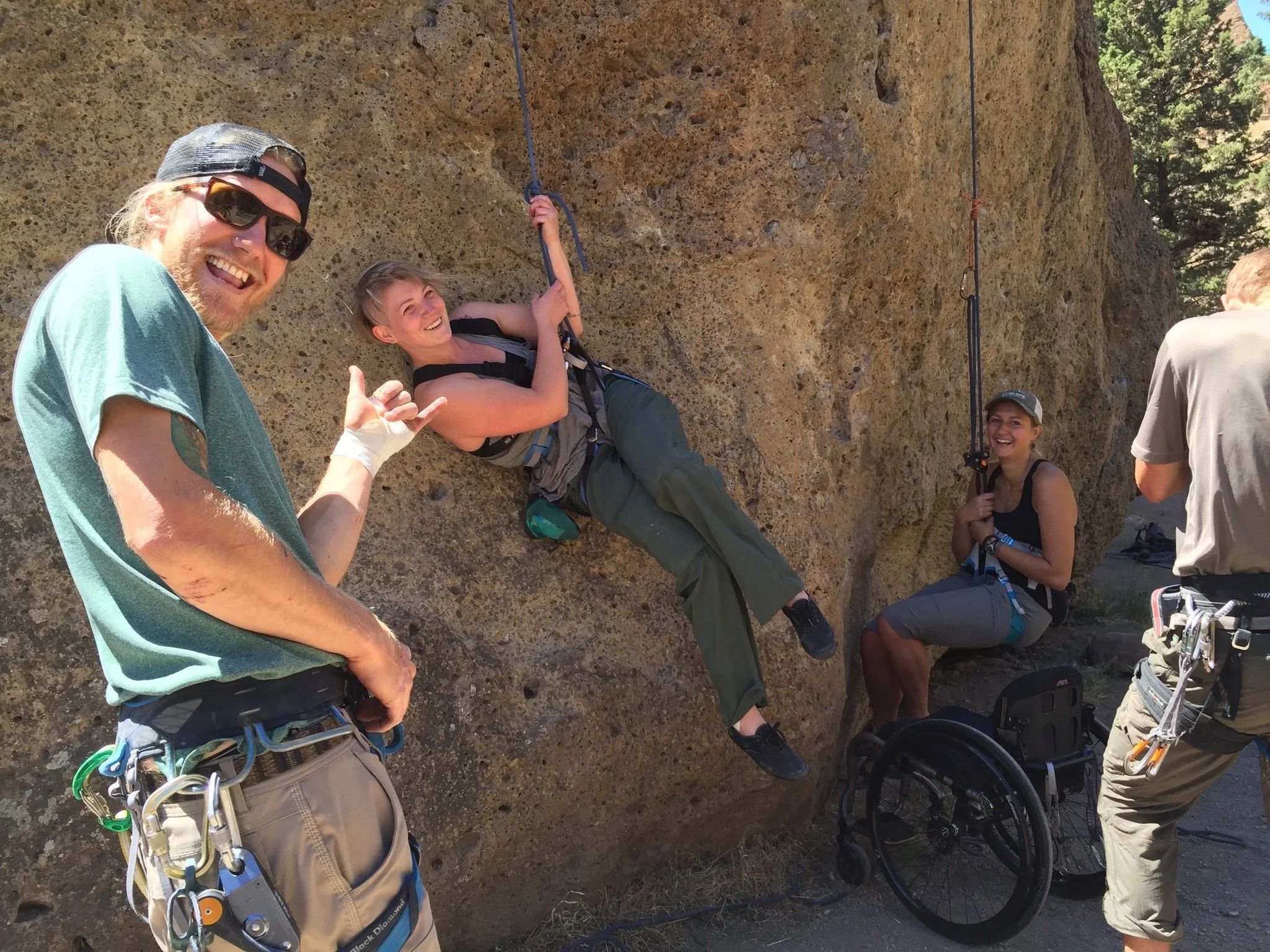Adaptive Climbing at Smith Rock
I’ve always been someone who sees possibility first. I’ll get an idea—sometimes wild, sometimes simple—and then figure out how to make it real. That’s exactly how this whole thing started.
A few years ago, I had just started seeing someone who invited me to go climbing. The day before, I asked if I could bring two friends along. He said sure and I let him know: “Hey, just so you know, both of them use wheelchairs.”
These were new friends from my work as an adaptive ski instructor. I didn’t have any real experience in adaptive climbing. I’d climbed a bit myself, but not much. I just knew that these people I cared about wanted to get outside, and I saw absolutely no reason why they shouldn’t come too.
So we went to Smith Rock. It was, in every way, an incredible shitshow. We carried humans and wheelchairs over boulders. We struggled to find routes that worked. It was chaotic and imperfect—but also joyful and unforgettable. That day lit a spark in me. I remember thinking: We have to figure this out. There’s something here.
I started learning everything I could. I found a book on adaptive climbing. I signed up for courses. I asked everyone I knew questions. Every time I went out to Smith Rock after that, I was scouting—looking for better paths, better climbs, better ways.
Eventually, I started an adaptive climbing group in the local rock gym. Every time I hit a gap in the plan or my knowledge, I leaned on the support of the people I met to connect me to someone else. Turns out, there are so many people who are beyond thrilled to help in any way they can. We built a community of people of all ages and abilities who just wanted to climb together. It ran for five years once a month and was truly a group made up of all ages and abilities. We made some incredible connections and helped so many people get into climbing for the first time, many with their entire family. But I still felt pulled to go even further—to help more people get out there, into nature, not just onto plastic holds in a gym.
The Adaptive Climbing Group volunteers.
Then one day, I talked to the right person. He suggested I reach out to a local guiding company. I did. And Cliff, the owner of Smith Rock Climbing School, generously donated his time, gear, and expertise (and continued to do so for the next five years).
It started with one pilot day at Smith Rock. I spent hours scouting Smith for the perfect location to run this event. I would obsess over the details in the evening, mapping out what type of equipment or modifications we could make to make a climbing adventure at Smith that supported the widest range of athletes. We had our first day. Ten adaptive athletes. Better equipment. Hand cycles and off road wheelchairs to cross the rocky terrain. A solid crew of volunteers. That day was magic.
First group climbing day at Smith Rock.
But it wasn’t easy. There were still huge physical and logistical barriers: rocks, fences, uneven trails. Athletes in wheelchairs had to transfer across a very unsteady fence just to get from the wall to the staging area. It was a massive undertaking each time. One of our volunteers said, “What if we asked the park to improve the trail?” I thought, Why not?
So we talked to the park service. We explained our vision and what we needed. And their response blew us away. They blew up the rocks along the trail. They cleared it. And then, that spring, we hosted a volunteer day to rebuild the whole area. We moved fences, regraded trails, and made the space work for everyone. The people who had been a part of this journey from day one, my friends, got to be a part of this day. They taught the park staff what types of gravel and how to lay it to better support their access. The park staff were so excited to build something that improved this space for the entire community.
Volunteer group at Smith Rock after rebuilding the Rope de Dope area.
Now, every time I go back to that spot, I feel this deep awe at how all these little moments, glimmers and a pipe dream came together into this beautiful space that has benefitted thousands of people. What started as an impulsive invitation to bring a couple of friends on a climbing trip turned into a reimagining of what access and inclusion in the outdoors can look like.
It wasn’t a perfect plan. It was never polished. It started with a junk show and a gut feeling that everyone deserves to be out there, feeling the sun on their face and the rock under their hands. It came to life with a drive to stay curious, ask questions, and keep following the spark supported by an entire community of people.
And now, we have a trail. We have a community. We have a space that says you belong here.
Story References
Bend Source





